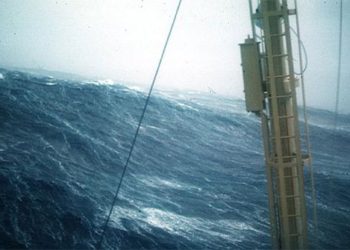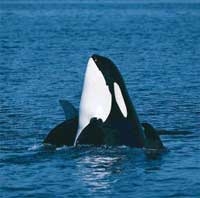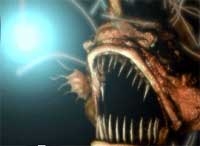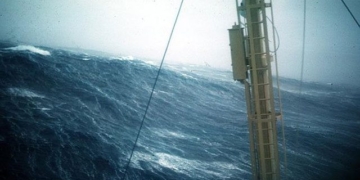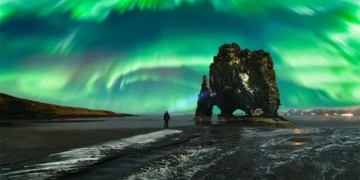Instead of spending millions on research vessels, scientists have set up a research station on a tourist ship in Antarctica to hunt for giant squids.
Simulation of the Antarctic giant squid living in the deep seas. (Video: Te Papa Museum)
The Antarctic giant squid (Mesonychoteuthis hamiltoni) is a mysterious cephalopod that can weigh up to 500 kg and measure 14 m with extended tentacles. Although fishing vessels have found some specimens, researchers still struggle to observe an individual in the wild.
Researcher Matthew Mulrennan hopes to change that with Kolossal, a non-profit organization he founded to film giant squids in their natural habitat. The goal is to gather basic information about this marine creature, such as its hunting methods and appearance at different life stages.
In 2022 and 2023, Mulrennan assembled a team of scientists with the aim of capturing footage of giant squids during Antarctic cruise trips. He estimates this effort cost a total of $500,000, which is significantly cheaper than hiring a research vessel. Renting a research ship can cost tens of thousands of dollars per day, with some similar expeditions costing up to $8 million.
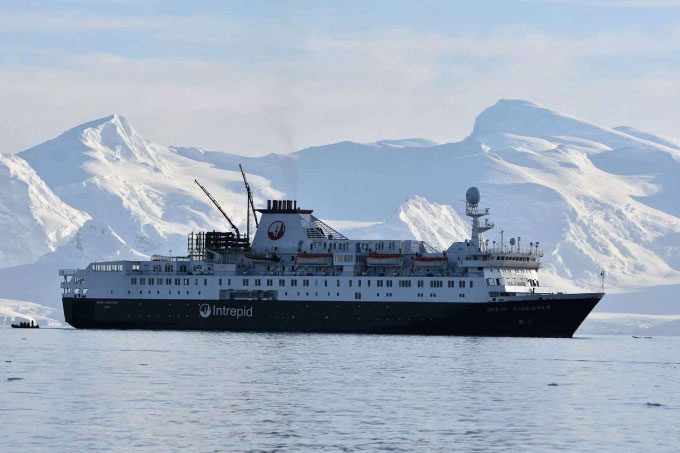
The Antarctic cruise ship Ocean Endeavour. (Photo: Business Insider)
Over four trips, tourists aboard the Ocean Endeavour witnessed the research team deploying cameras into the frigid waters of the Southern Ocean to capture images of marine life. They even built a complete research station on the ship. Ultimately, their underwater cameras recorded dozens of species in Antarctica, including a small creature resembling a giant squid, as reported by Business Insider on April 16.
Adult giant squids live at depths exceeding 900 meters in the waters surrounding Antarctica, beyond the reach of the best divers, while submersibles may scare them away. Consequently, researchers still know very little about them. Many specimens have been found in the stomachs of sperm whales, which can consume up to 77% of giant squids in their diet. Meanwhile, a 2015 study revealed that scientists had only discovered 12 complete giant squid specimens.
Giant squids are also difficult to conserve for long-term study, according to Myrah Graham, a research fellow at the Marine Institute at Memorial University, who accompanied Mulrennan on one of the expeditions. Therefore, many fundamental aspects about them remain unidentified, such as lifespan, reproductive processes, and population size.
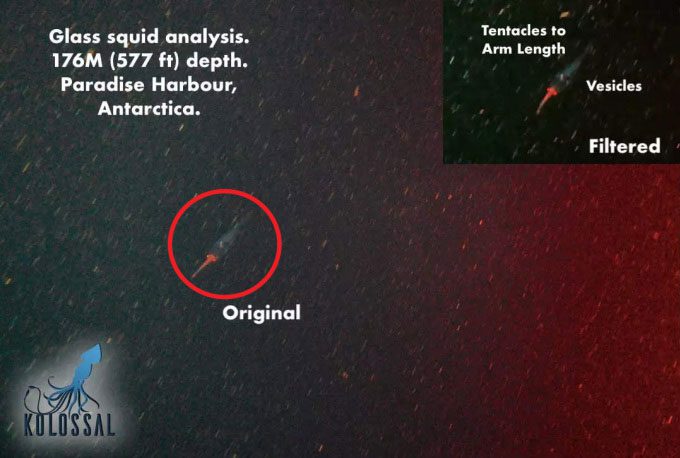
The Kolossal team filmed a creature resembling a juvenile giant squid or an adult glass squid at Paradise Harbor, Antarctica. (Photo: Business Insider)
During 58 days at sea, Kolossal’s cameras recorded over 80 species of marine life, including giant volcanic sponges, Antarctic dragonfish, Antarctic sunstars, and a creature resembling a giant squid. Experts reviewing the images stated that they could not determine whether it was a juvenile giant squid or an adult glass squid. According to Graham, this indicates they are moving in the right direction.
Mulrennan hopes to return to Antarctica in the next season, aiming to discover the giant squid by 2025.








































